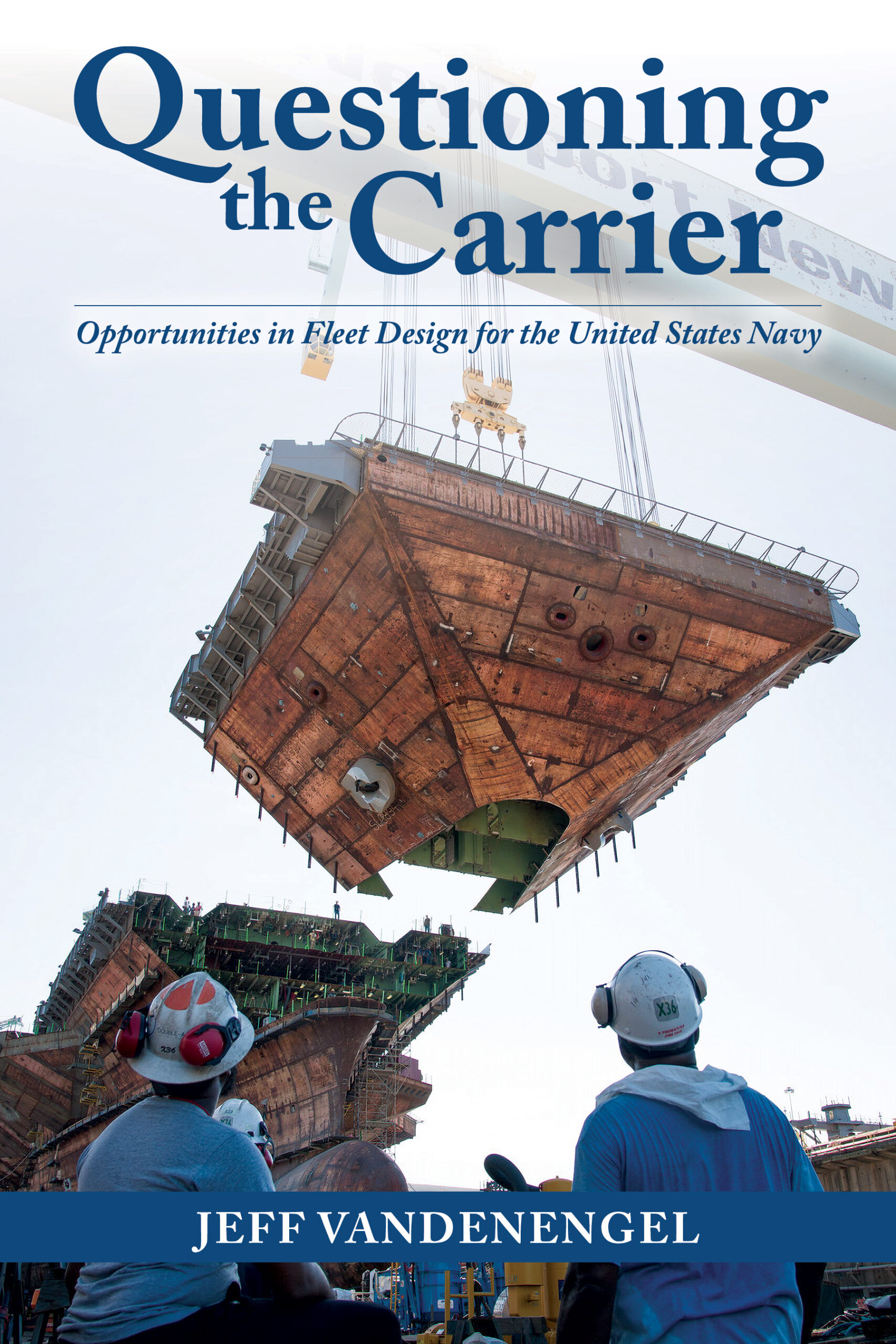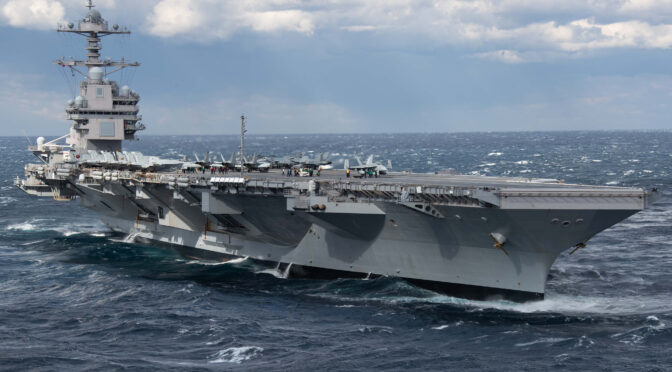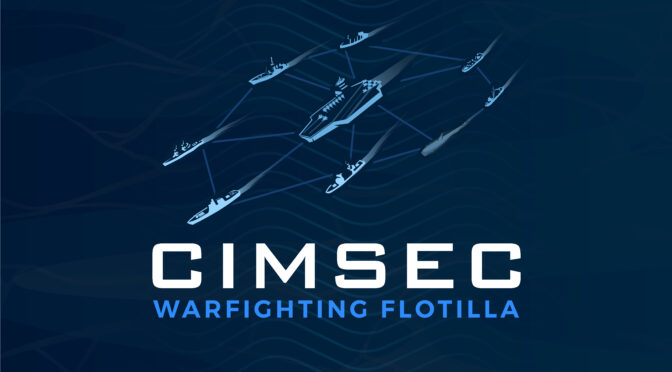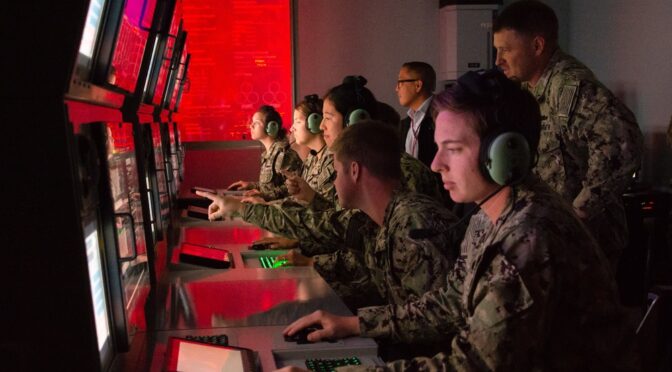By Dmitry Filipoff
Jeff Vandenengel spoke with CIMSEC about his new book, Questioning the Carrier: Opportunities in Fleet Design for the U.S. Navy. In this book, Jeff makes critical contributions to ongoing debates about what kind of fleet the Navy needs and how it can evolve beyond its carrier-centric force design.
In this conversation, Jeff talks about the carrier’s liabilities, what opportunities can be seized with a new force structure, and the challenges of moving beyond the carrier.
Intense debates on the carrier have existed for as long as the platform itself. Why write a book on questioning the carrier, and why now?
Navies’ force designs are a function of both the era’s available technology and the fleet’s intended missions. To question the carrier requires an alternative answer, a realistic force structure that can better execute those missions.
are a function of both the era’s available technology and the fleet’s intended missions. To question the carrier requires an alternative answer, a realistic force structure that can better execute those missions.
For much of the aircraft carrier’s history, there was no alternative that could outperform the platform and its supporting force structure. Following World War II, the technology either did not exist or was not robust enough to support alternative force structures, and the carrier, despite its flaws, repeatedly proved itself the worthy flagship of the fleet. It defended the Pusan Perimeter in the Korean War, launched the majority of U.S. sorties in the Vietnam War, and was the right choice to lead the U.S. Navy against the Soviet Union in the Cold War.
Starting in the 1990s, the technology likely existed to improve on the carrier-centric model, but the mission did not. With the demise of the Soviet Union and the People’s Liberation Army Navy being a weak coastal force, there were no credible naval adversaries and so the U.S. Navy shifted its focus to power projection from uncontested seas, a mission the large nuclear-powered aircraft carrier excels at.
Today, we have both the technology and the mission to move past the carrier-centric fleet. The Navy, partnered with industry, has worked hard to develop the technologies that will enable such a change, including advanced sensors, communications, and missiles. At the same time, with the rise of the People’s Liberation Army Navy (PLAN), there is a mission demanding a change in the fleet’s structure: sea control and contested power projection against a peer adversary.
Therefore I wrote this book to show that, with today’s technology and the Navy’s evolving missions, it is time to question the carrier’s centrality to the fleet’s structure. It will remain a key component of that fleet for decades to come, but today’s technologies provide better options to accomplish the Navy’s peacetime and combat missions.
The large nuclear-powered aircraft carrier, the reason for our Navy’s success for so many years, is now holding us back from an ever better future.
In the book you say that, “The mission has become the protection of the carrier rather than attacking effectively first. Yet the perfect defense for a priceless platform has rarely if ever been possible in naval history.” Why does this tension exist between protecting the carrier and enabling more of the fleet to take on offensive roles? How is the carrier-centric model incurring an opportunity cost in fleet design, and forcing the Navy to focus on defending a single point of failure?
The large nuclear-powered aircraft carrier is the single most powerful surface warship in all naval history, in part because it concentrates a great deal of capabilities onto a single ship. When that ship can operate as intended, that concentration makes the carrier an efficient and flexible means of deterring adversaries and delivering firepower. However, if that ship is lost, all those impressive capabilities are lost at the same time.
More seriously, the sinking of a Ford- or Nimitz-class carrier would likely be catastrophic for the Navy and perhaps the nation. The destruction of a $12 billion ship serving as a symbol of American might would have unmatched military, diplomatic, and political consequences. The casualties could exceed those of previous momentous Navy losses such as USS Chesapeake, USS Maine, USS Arizona, USS Houston, USS Indianapolis, and USS Thresher—combined.
To prevent that from occurring, the Navy has little option but to devote great operational and financial resources to the ship’s defense, a task the Navy has excelled at—a U.S. aircraft carrier is the best defended ship in the world. However, that defense must operate to a different standard than that of every other warship – it must be perfect to avoid the unthinkable, the loss of an American supercarrier. There is little naval history to suggest we can generate such a perfect defense, and trends in scouting and weapons technology indicate that task is only getting harder. More importantly, within the Navy’s finite resources, every sailor, ship, and dollar focused on the defense of the aircraft carrier is not focused on “attacking effectively first,” which Captain Wayne Hughes showed to be the key to combat at sea.
For example, consider the Surface Force leadership’s 2015 introduction of the exciting idea of “Distributed Lethality,” which evolved to “Distributed Maritime Operations” today. They boldly outlined an initiative to distribute the surface fleet and better enable all ships to launch their own attacks, writing that “a shift to the offensive is necessary.” However, the Navy will always be limited in how many platforms it can distribute for offensive operations when so many of them are concentrated for the defense of eleven capital ships. The admirals even indirectly acknowledge that limitation in the opening paragraph of their work, writing, “The surface fleet will always defend the high-value and mission-essential units; that is in our core doctrine.”
For decades the centralization of resources and missions on the “high-value and mission-essential” carrier was a good thing, as it proved to be an effective and efficient means of accomplishing the Navy’s tasks. With no credible adversaries at sea, there was little risk of losing a carrier. There was no one to attack at sea, so there was no reason to focus on attacking effectively first.
Today the situation at sea has obviously changed. To effectively execute the sea control and contested power projection missions against a peer adversary, the fleet must be focused on attacking effectively first. It cannot do that while huge portions of that fleet are focused on the defense of eleven ships. To maximize the Navy’s readiness for combat against our adversaries, it is necessary to move past the carrier-centric model.
The effectiveness of a fleet force structure can be weighed through numerous factors and considerations. What are your criteria for valuing the peacetime utility and wartime combat power of fleet force structure?
A fleet should be judged by its ability to execute the Navy’s peacetime and wartime missions, within existing financial, technological, industrial, operational, and political constraints.
In peacetime, the U.S. Navy is responsible for the “promotion of the national security interests and prosperity of the United States,” as the recently amended Title 10 language directs. The Navy’s presence operations, or campaigning, can include deterring adversaries, reassuring allies, protecting trade, conducting exercises, and ensuring freedom of navigation. We are seeing the importance and value of those operations off Israel and in the Red Sea right now.
Part of that evaluation must be the quantity of platforms in the fleet, as ships can only be in one place at a time and, as Secretary of Defense Robert Gates said, “A smaller military, no matter how superb, will be able to go fewer places and be able to do fewer things.” However, simply counting ships tells only part of the story, as they are not all equal in their ability to influence the nation’s allies and adversaries. Today, no single ship can match a Nimitz- or Ford-class aircraft carrier in presence value—but the correct metric is the fleet’s overall presence value, not that of a single ship.
In wartime, the force structure should be evaluated by its ability to conduct primary mission areas such as reconnaissance, anti-surface warfare, anti-submarine warfare, integrated air and missile defense, and strike warfare, all to gain sea control and project power ashore. Again, there are both quantitative and qualitative factors to that evaluation. Numerically, a fleet with more ships has better geographic coverage, better distributes its capabilities, is more difficult to track, and better retains its combat power after suffering losses. However, fleet capability is also a function of warship quality, accounting for their sensors, weapons, command and control systems, survivability, and logistics capabilities. Today there is no single more powerful surface warship than a large nuclear-powered aircraft carrier—but there are more powerful force structures than one centered on those carriers.
You propose an alternative fleet force structure called the Flex Fleet. How is this fleet different than the Navy’s current and proposed force structures, and how is it more competitive?
The primary purpose of the hypothetical Flex Fleet is to disprove the argument that we cannot do better than a fleet centered on the large nuclear-powered aircraft carrier. The Flex Fleet is designed to show that it is operationally, technologically, and financially possible to generate a force structure that outperforms today’s already impressive fleet. When the Navy decides to move past the limits of a fleet concentrated around the CVN, it can surely develop a force structure better than both the Flex Fleet and today’s force, drawing on its own staffs’ designs, the work of Captain Jeff Kline and his colleagues at the Naval Postgraduate School, and your “Fighting DMO” series, Dmitry.
The Flex Fleet is designed to attack effectively first, seeking to fulfill Captain Wayne Hughes’ tactical maxim, as described in Fleet Tactics. To do that, it seeks to capitalize on modern opportunities in fleet design, opportunities that the Navy has made great progress on but cannot fully benefit from while operating within the confines of the carrier-centric model. The Flex Fleet seeks to embrace the Age of the Missile, network the distributed fleet, and thus diversify the fleet’s kill chains. To do that, it adds missile corvettes, missile arsenal ships, and light carriers, and increases the number of planned Constellation-class frigates. To pay for that, it stops producing Ford-class carriers, reduces the number of planned new construction Arleigh Burke and follow-on DDGs, and cancels plans for conventionally armed Columbia-class SSGNs, as called for in the Navy’s most recent Thirty-Year Shipbuilding Plan.
The resulting Flex Fleet shifts the Navy from an all-capital ship structure to a better mix of large and small platforms. In peacetime, its improved platform numbers and combat credibility means the collective fleet can better conduct the Navy’s presence operations, even if no single ship in that fleet can match the CVN’s presence value. In combat, its distributed structure and large missile inventory means it is better at finding the enemy and attacking effectively first, can more effectively project power ashore from contested seas, and is better able to survive the inevitable losses of war.
The Flex Fleet, operating within existing financial and technological constraints, has more platforms launching more weapons from more vectors and from more domains than the Navy’s already formidable “program of record” fleet. It is a fleet focused on deterring a peer adversary, and if that fails, winning sea control and projecting power from contested seas.
The Flex Fleet does not do away completely with carriers, but rather narrows their mission set and distributes their capacities more broadly into CVL “lightning carriers.” How can these carriers and their roles offer a better alternative to the fleet?
Without a credible threat at sea, concentrating the fleet’s missions on the CVN is an efficient and effective method. However, against a peer adversary, there are certain missions that naval aviation is best suited for, and other missions that different platforms and weapons can perform more effectively.
As a result, the Flex Fleet seeks to alleviate the burden on today’s carrier force and shift some of its missions to the rest of the fleet, which would reduce the need for CVNs. Shifting to CVLs allows for the use of an increased number of carriers, allows for naval aviation to achieve improved geographic spread and a more distributed structure, and reduces the fleet-wide impact if one is lost.
Make no mistake, a CVL is less capable than a CVN. Furthermore, if all we do is take the money for CVNs and buy an increased number of CVLs, it will result in a weaker fleet overall. But, as then-Chief of Naval Operations Michael Gilday said in 2020, previous Pentagon carrier studies have tried to make an “an apples-to-apples comparison” that “lead to fait accompli that a smaller carrier just does not compete with a super carrier. I think that’s a false choice.”
The best comparison is not CVN versus CVL, but fleet versus fleet: the carrier-centric fleet versus an alternative force structure that benefits from carriers’ many attributes without being wholly dependent on them.
You dive extensively into the recent combat history and dynamics of the major warfare areas to understand how they may affect carrier capability and survivability. What aspects and trends of the undersea domain in particular, especially submarine and mine capability, most affect the future of the carrier?
One of the carrier’s greatest attributes is its ability to stay mobile to avoid targeting while accomplishing its tasking. Today, with over-the-horizon radars, satellite networks, cyber penetration tools, and networked communications, it is harder to hide the carrier than at any point in its history.
On the other hand, submarines’ improved quieting and elimination of historical vulnerabilities means undersea scouting is getting more difficult. For example, Admiral James Foggo III and Dr. Alaric Fritz wrote in 2016 that modern Russian submarines are “significantly quieter,” meaning “The clear advantage that we enjoyed in antisubmarine warfare during the Cold War is waning.”
The Falklands War demonstrated those diverging trends in scouting. The nuclear-powered submarine HMS Conqueror found the Argentinian cruiser ARA General Belgrano within 24 hours of receiving orders to do so. It stalked the ship and her escorts undetected for more than 24 hours while waiting for permission to attack, and then destroyed Belgrano and escaped without the escorts ever knowing the submarine’s location. As a result, the Argentinians withdrew their entire surface fleet to port for the remainder of the war. In the only case of a nuclear-powered submarine entering combat, it found and destroyed a single ship without ever being found—and defeated an entire navy in the process.
That is not to suggest that surface ships are suddenly obsolete. Submarines’ poor presence abilities, communications, and cargo capacity means they cannot perform many of the Navy’s missions. However, it does indicate that we can better capitalize on submarines’ potential while shifting away from a fleet structure that requires a perfect—and therefore unlikely—defense against the undersea threat.
Mines are just as problematic. While they are a threat to all warships, the nation’s low risk tolerance regarding CVNs means even an adversary’s press release about a supposed minefield could lead commanders to not commit their most powerful ship.
Numerous constituencies are heavily invested in continued carrier procurement. What will it take to make a major course change in fleet force structure?
There are many institutions and individuals with both the incentive and ability to influence the Navy’s force structure decisions to protect the carrier. This is not to argue that they are doing anything wrong—they are not. This is to argue that their strong connections to military leadership and Congress gives them the ability to affect the Navy’s shipbuilding decisions, and their valid financial, political, or organizational motivations give them a reason to exert that influence. As a result, a change away from the carrier-centric model will be one of the most difficult evolutions our Navy has ever faced.
Within the military, shifting away from the large nuclear-powered aircraft carrier would upset the balance of power between warfare communities, have huge implications for resource decisions, restrict aviators’ primary path to flag rank, eventually end the entire community of nuclear-trained Surface Warfare Officers (Nuke-SWOs), and constrain Naval Reactor’s influence to just the submarine force.
Within the defense industry, there are entire organizations that advocate for CVNs, such as the Aircraft Carrier Industrial Base Coalition representing thousands of companies. There are dozens, if not hundreds, of retired flag officers working for those companies. For example, Huntington Ingalls Industries employs a former Combatant Commander, a former Director of Naval Reactors, a former Naval Air Forces Commander, a former Naval Sea Systems Commander, and a former Chief of Legislative Affairs, all distinguished leaders who formerly oversaw the Navy’s financing, production, or operation of aircraft carriers, and now work for the sole producer of those carriers.
Finally, within Congress, approximately 96 percent of Senators and roughly two-thirds of Representatives have companies involved in carrier construction or maintenance in their district, meaning they have a very good reason (constituent jobs) to maintain the fleet’s structure. It will be impossible to evolve the fleet without earning buy-in from across the Department of Defense, defense industry, and Congress, a difficult task to say the least.
There are lots of organizations that can resist such a move if they choose to, but I believe only one has the knowledge, experience, and vision to lead it—OPNAV. The change is simply too large, too complex, and will take too many years to successfully accomplish without the Navy’s uniformed leadership driving it. As Admiral Sandy Winnefeld said, for the U.S. Navy to transform its fleet structure, “The real leader has to be a noisy, impatient, creative, courageous, and insistent military leadership.”
Fortunately, the Navy has faced similar challenges in the past and overcome them to improve itself. There is the story of obstructionist battleship admirals stuck in the past leading up to World War II, but that is a myth. In reality, the Navy made great progress developing naval aviation in the interwar period because of leaders like Admirals Joseph Reeves, William Moffett, and William Sims. They innovated with aircraft and ship designs, changed the personnel and training systems, and developed a new way of fighting. When a mission came along that required carrier aviation—the Pacific theater in World War II—the Navy was ready because of their pioneering work.
OPNAV continues that tradition of innovative and bold leadership today. Whenever they decide it is time to evolve the fleet, they will surely face a daunting challenge. However, whether or not we think we can transition away from the carrier-centric fleet, I believe the evidence is increasingly clear that we need to.
CDR Jeff Vandenengel is a naval officer with tours on three fast-attack submarines. Winner of the 2019 Admiral Willis Lent Award for tactical excellence at sea, he deployed to the Western Pacific three times and to the Atlantic at the start of the Russian invasion of Ukraine. These views are his alone and do not necessarily reflect the official policy or position of the Department of Defense or U.S. government.
Dmitry Filipoff is CIMSEC’s Director of Online Content. Contact him at Content@cimsec.org.
Featured Image: ATLANTIC OCEAN (March 26, 2022) The aircraft carrier USS Gerald R. Ford (CVN 78) transits the Atlantic Ocean. (U.S. Navy photo by Mass Communication Specialist 3rd Class Jackson Adkins)



